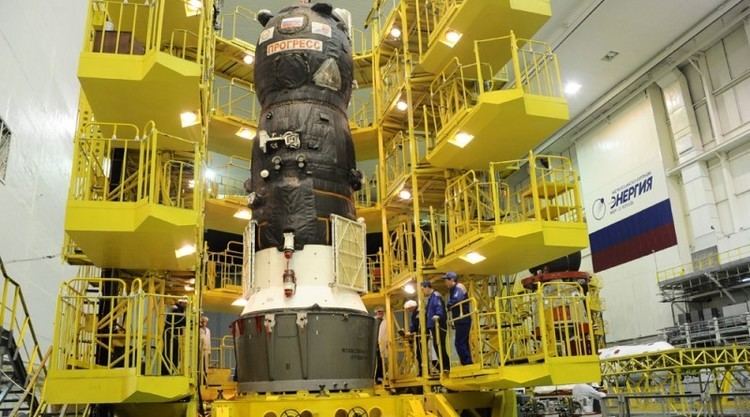Mission type ISS resupply SATCAT no. 41436 Launch date 31 March 2016 | COSPAR ID 2016-022A Docking date 2 April 2016 17:58 | |
 | ||
Manufacturer Roscosmos State Corporation Operator Roscosmos State Corporation Similar Progress MS‑03, Progress MS‑01, Progress M‑29M, Progress M‑63, Progress M‑51 | ||
Iss progress 63p progress ms 02 launch
Progress MS-02 (Russian: Прогресс МC-02), identified by NASA as Progress 63 or 63P, is a Progress spacecraft used by Roscosmos to resupply the International Space Station (ISS) during 2016. It was launched on March 31, 2016, to deliver cargo to the ISS.
Contents
Launch
Progress MS-2 was launched on 31 March 2016 at 16:23 UTC from the Baikonur Cosmodrome in Kazakhstan.
Docking
Progress MS-2 docked successfully with the aft docking port of the Zvezda module on 2 April 2016 at 17:58 UTC.
Cargo
The Progress MS-2 spacecraft carried 2425 kg of cargo and supplies to the International Space Station. The spacecraft delivered food, fuel and supplies, including 540 kg of propellant, 47 kg of oxygen and air, 420 kg of water, and 1418 kg of spare parts, supplies and experiment hardware for the six members of the Expedition 47 crew..
Technology
The Progress MS spacecraft has upgraded communications and electronics from previous Progress vehicles. After launch, ground controllers were able to communicate the Progress MS via a Russian Luch data relay satellite in geosynchronous orbit. This was described as the first time a Progress or Soyuz spacecraft had such capability.
Other upgrades include:
